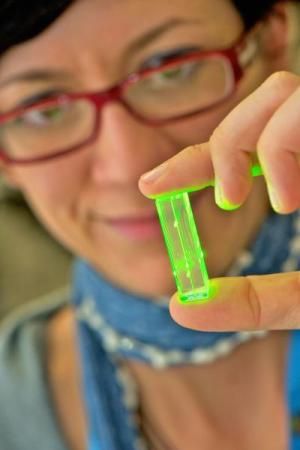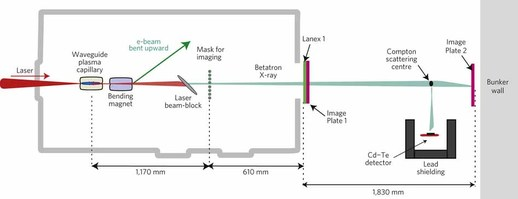
Gamma rays -- they're what made the fictional Hulk, and they are today saving lives via medical imaging and radiation therapy for cancers, not to mention unlocking the mysteries of the universe. But many of these applications are confined by how powerful (intense) these beams are. Thus these applications may get a huge boost from research by the University of Glasgow and University of Strathclyde (located in Glasgow, Scotland, UK), along with Instituto Superior Técnico (Lisbon, Portugal) which has produced the most intense gamma rays man has ever been able to produce.
The super rays are a thousand times brighter than the Sun. And they are so intense they can penetrate up to 20 cm (over half a foot) of lead, or 1.5m (almost 5 feet) of concrete.
The peak radiance of the super-bright beam was more than 10e23 photons per second, per square milliradian, per square millimeter, per 0.1% bandwidth. If you're not involved in research physics, suffice to say that's a whole lot of high-energy photons.
To create the beam, researchers used the University of Strathclyde's Gemini laser. The Gemini is capable of ultra-fast pulses, which interacted with a special stew of gaseous chemicals to produce the ultra-intense laser pulses. The laser's accelerator shrinks room-sized models down to handheld size, via the plasma wake-field technique we previously profiled. To recap, this technique is somewhat like a wakeboarder riding in a boat wake -- with each successive peak hit, the photons pick up a bit more kinetic energy.
Professor Dino Jaroszynski of Strathclyde describes [press release]:
In nature, if you accelerate charged particles, such as electrons, they radiate. We trapped particles in a cavity of ions trailing an intense laser pulse and accelerated these to high energies. Electrons in this cavity also interact with the laser and pick up energy from it and oscillate wildly -- much like a child being pushed on a swing. The large swinging motion and the high energy of the electrons allow a huge increase in the photon energy to produce gamma rays. This enabled the gamma ray photons to outshine any other earthbound source.The new beam could allow for new cancer radiation therapies, as well as a new imaging technique that could be applied to all sorts of small-scale problems, including nuclear fusion.
The accelerator we use is a new type called a laser-plasma wakefield accelerator which uses high power lasers and ionised gas to accelerate charged particles to very high energies -- thus shrinking a conventional accelerator, which is 100m long, to one which fits in the palm of your hand.
A diagram (source: Nature Physics) can be seen below, which shows the laser, the wave-guide which accelerates it, and finally the apparatus to create the gamma beam and apply it to an imaging application:
Professor Jaroszynski elaborates:
This is a great breakthrough, which could make the probing of very dense matter easier and more extensive, and so allow us to monitor nuclear fusion capsules imploding.A paper on the topic [abstract] was published in the high-impact peer-reviewed journal Nature Physics.
To prove this we have imaged very thin wires -- 25 microns thick -- with gamma rays and produced very clear images using a new method called phase-contrast imaging. This allows very weakly absorbing material to be clearly imaged. Matter illuminated by gamma rays only cast a very weak shadow and therefore are invisible. Phase-contrast imaging is the only way to render these transparent objects visible.
The research was funded by the Engineering and Physical Sciences Research Council, the Science and Technology Facilities Council, the Laserlab-Europe Consortium, and the Extreme Light Infrastructure project.




How soon before they will try to make a weapon out of it?